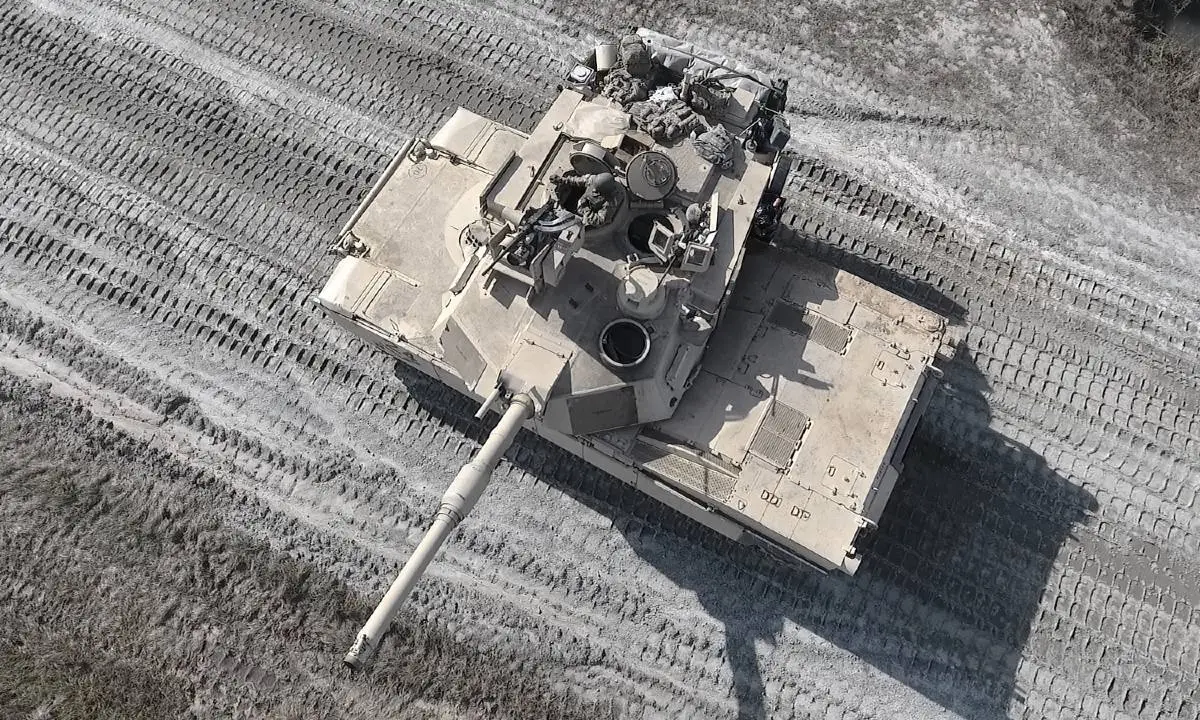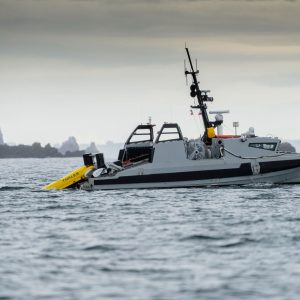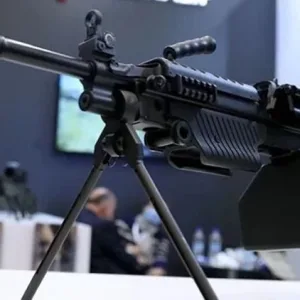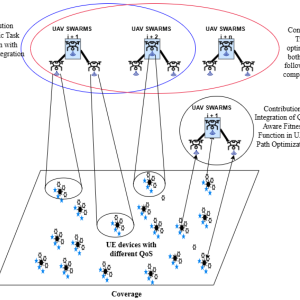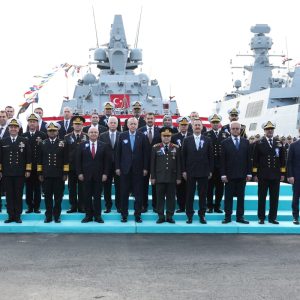Armies that master teaming armored formations with UAVs will dictate the tempo of twenty-first-century land combat. Tanks and infantry fighting vehicles retain decisive shock effect, but their survivability now hinges on organic drones, resilient networks, and kill chains that run from quadcopters to long-range fires. Recent doctrine and battlefield evidence converge on the same conclusion: armor that sees first, decides first, and strikes first will live to maneuver another day.[1–3]
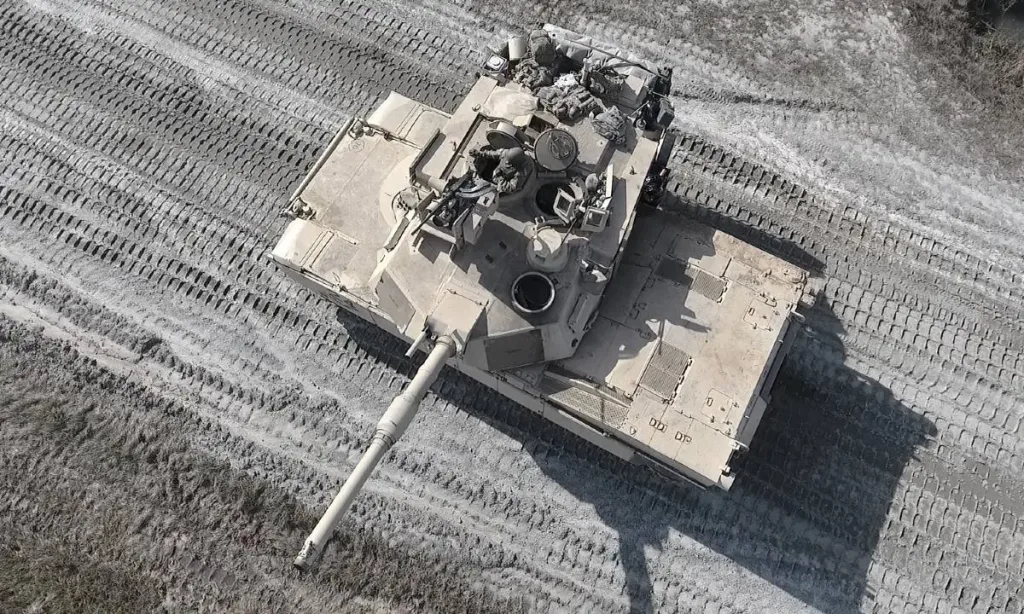
Key Facts
• Armored forces that integrate UAV sensing, deception, and strike achieve faster kill chains and lower exposure to antiarmor systems.[1,3]
• Multidomain Operations (FM 3-0) requires cross-domain convergence; teaming armored formations with UAVs is a primary pathway to execute it at echelon.[2]
• Electronic warfare in Ukraine proves that drones must be treated as expendable and made resilient by design (secure links, autonomy, emission control).[4]
• Interoperability standards (e.g., STANAG 4586) and joint experiments like Project Convergence shorten decision cycles from minutes to seconds.[3,5,6]
From vignette to requirement: what the battlespace demands
A recent analysis from the Modern War Institute depicts a battalion breach shaped by swarming drones: turret-launched quadcopters scout, loitering munitions finish, and decoy emitters draw fires off the axis of advance. The breach force then punches through under smoke and overwatch while follow-on UAVs feed targets to deep fires.[1] The lesson is clear. Teaming armored formations with UAVs is not an accessory—it is the scaffolding for tempo, deception, and protection.
Ukraine’s battlefields add a hard economic logic. Units are trading thousands‑dollar drones for the survivability of multimillion‑dollar armor, using unmanned systems to probe, map threat envelopes, and cue precision fires before committing crews. This exchange is rational because it preserves decisive combat power while keeping pressure on enemy sensors and interceptors.[4,5]
Doctrine and experiments are already aligned
Since 2022, FM 3‑0 has set Multidomain Operations (MDO) as the Army’s operational concept. In practice, MDO means converging sensors, shooters, and decision tools across land, air, maritime, cyber, and space. Teaming armored formations with UAVs is one of the most direct ways to operationalize that convergence at battalion and brigade level, turning every vehicle into a node of a persistent sensor network.[2,3]
Project Convergence has repeatedly demonstrated joint kill webs where unmanned aircraft discover, characterize, and hand off targets to long‑range precision fires, collapsing kill chains from minutes to seconds. These demonstrations show how armor can be both spotter and finisher when drones, AI‑enabled recognition, and digital fires are tightly integrated.[3,6]
“See first, decide first, strike first” is no longer a slogan; it is the survival algorithm for crews inside steel.
Designing the team: sensors, links, and workflows
The technical backbone of teaming armored formations with UAVs rests on three pillars: (1) organic sensing, (2) assured connectivity, and (3) repeatable battle drills.
Organic sensing. Crews need “over‑the‑hill” reconnaissance without cresting into fires. Turret‑rack quadcopters and micro‑loitering munitions provide near‑instant vertical situational awareness, while larger tactical UAVs extend reach into the deep area to detect ambushes, artillery hides, and mobility corridors.[1]
Assured connectivity. EW‑dense environments demand secure, low‑probability‑of‑intercept/low‑probability‑of‑detection (LPI/LPD) links, lost‑link autonomy, and disciplined emissions. Interoperability matters as much as range or endurance; NATO standards like STANAG 4586 allow dissimilar control stations and payloads to share targeting data across formations and allies.[4,6]
Repeatable battle drills. UAV overwatch should be a default step in breach, attack, and defense. Control consoles must be integrated into future vehicles rather than bolted on. Companies should rehearse sensor‑to‑shooter workflows—tasking, confirmation, fire mission, and poststrike assessment—until they are as routine as battle carry ammo checks.
Training and sustainment: treating drones like ammunition
In practice, teaming armored formations with UAVs rises or falls on training and sustainment. Units must normalize drone flight, data interpretation, and fires handoff at crew and platoon level. Leaders need repetitions making decisions from live feeds. Equally, drones must be treated as consumables. They will crash, be jammed, and be lost; planning factors should stock spares, batteries, and repair kits alongside tracks and road wheels.[4]
Airspace deconfliction and fratricide prevention require tighter integration with digital fires networks and tactical airspace measures. Crew drills should include “lost link” procedures, autonomous return‑to‑home profiles, and standardized emissions control. These are not boutique skills—they are the new baseline for armor.
Joint integration: plugging armor into the kill web
Armored UAV operations gain exponential value when connected to joint and combined networks. Project Convergence and related joint experiments show how drone‑sourced tracks flow to air, maritime, and land fires, how target nominations can be tasked from joint fires cells, and how multinational partners can contribute sensors and shooters on the same timeline.[3,6]
To scale this, data standards and security must be treated as operational requirements. Profiles such as ADatP‑34 and common message sets help ensure that what a platoon quadcopter sees can inform a theater‑level dynamic target nomination without brittle, ad‑hoc translation layers.[7]
Policy and culture: from enabler to integral crewmate
Perhaps the hardest shift is cultural. Leaders must treat UAVs not as external enablers but as integral crewmates. Doctrine, courseware, and unit standard operating procedures should reflect a future where every vehicle is a sensor, every troop is a data node, and every maneuver decision is informed by persistent aerial reconnaissance. Only then will teaming armored formations with UAVs deliver its full payoff in survivability and lethality.
Bottom line
Armor remains the combat arm of decision. But in a battlespace saturated with sensors and precision fires, the formations that win will be those that integrate organic drones, resilient links, and repeatable sensor‑to‑shooter workflows. Teaming armored formations with UAVs is no longer experimental—it is the minimum standard for crews who intend to survive the first contact and dictate the second.
Related analysis: USMC’s attack‑drone teaming and its implications for armored maneuver.
References
- Modern War Institute at West Point, “Steel and Silicon: The Case for Teaming Armored Formations with UAVs,” Aug. 23, 2025. Available at the source article. [External link]1.
- U.S. Army, Field Manual 3‑0: Operations (2022, current online edition). [PDF]2.
- U.S. Department of Defense, “Project Convergence,” spotlight and PC‑C4 news releases (2024–2025). 3; 3a.
- Royal United Services Institute (RUSI), “Competitive Electronic Warfare in Modern Land Operations,” Jan. 2025. [PDF]4.
- CSIS, “The Russia‑Ukraine Drone War: Innovation on the Frontlines and Beyond,” May 28, 2025. 5.
- NATO STANAG 4586 (UAV Interoperability Standard), background and access via NATO NSO portal. 6.
- NATO Interoperability Standards & Profiles (ADatP‑34, Ed. N v2), May 2023. [PDF]7.
Disclosure. This article is an independent analysis that synthesizes publicly available doctrine, official releases, and reputable research to examine teaming armored formations with UAVs for defence and aerospace professionals.

